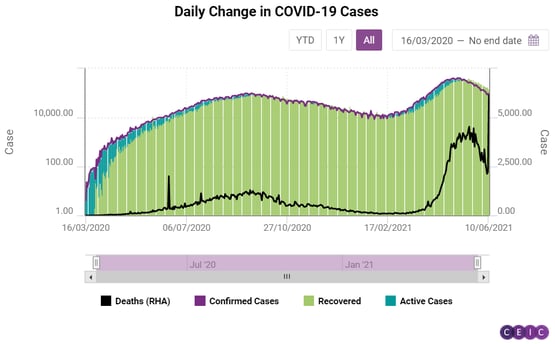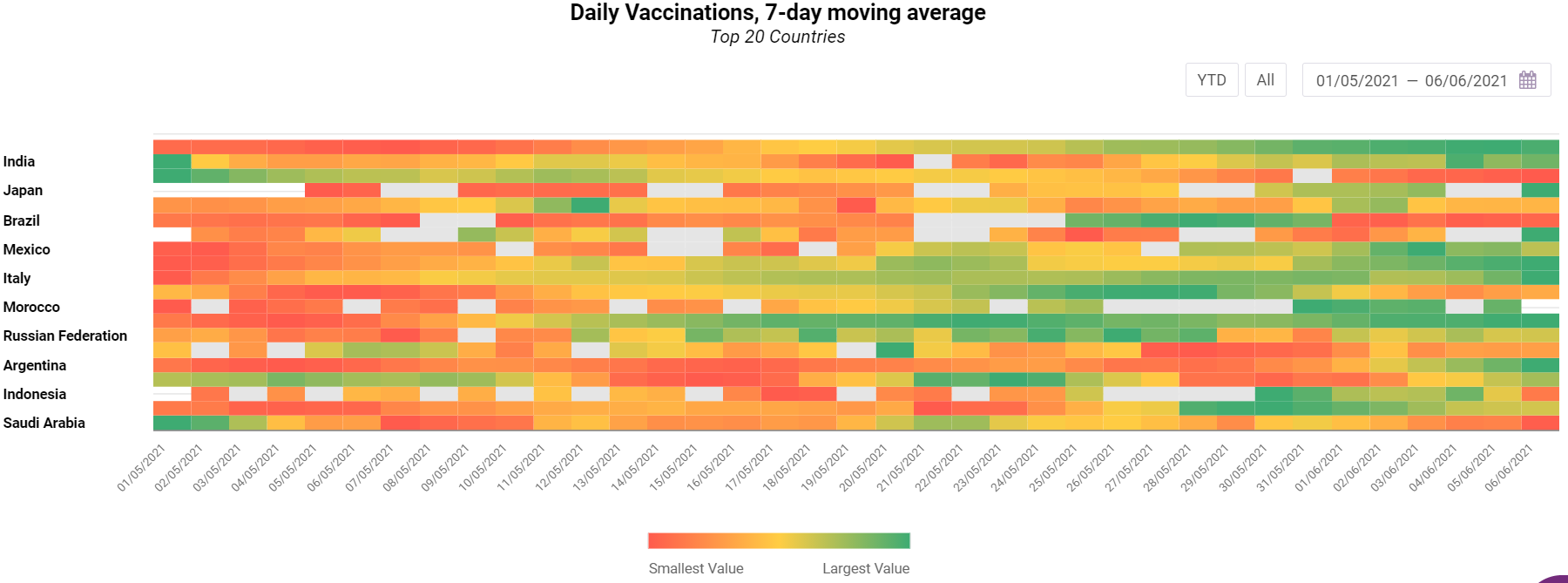
India started its vaccination drive on January 19, 2021, with a phased roll-out plan.
The first phase of the drive focused on inoculating the frontline workers and lasted until the end of February. The second phase of the vaccination campaign included all people above 60 years, and those above 45 years with existing comorbidities such as heart-related issues, hypertension, diabetes, transplants, kidney disease, cancer, and breathing disorders. Since April 1, 2021, all 45-year-olds and above were allowed to get immunized. A month later, on May 1, 2021, vaccinations were opened for all people of 18 years and above.

India successfully managed to vaccinate 170mn people in a span of 114 days, as compared to China and the United States, which took 119 days and 115 days, respectively, to immunize the same number of people. At present, India ranks third in terms of total persons vaccinated. However, due to the sheer size of the population, India has vaccinated only 17.4% of its total population. If a complete vaccination is considered, accounting for people who have had both doses, it is a mere 3.4%. Hence, the country has a long way to go to vaccinate its complete population.

Based on the present rate of vaccination, it would take India about 11 years to fully vaccinate the entire population, and about two years to ensure that everyone has secured at least one dose. In order to ensure ample availability of vaccines, India is considering emergency approval of more vaccines to accomplish the immunization drive as quickly as possible.
Sign in to access all datasets for this insight piece here. Alternatively, you can learn more about the CEIC India Premium Database - the premier source for everything you need to know about the Indonesian economy, housing an unprecedented wealth of information revealing the drivers of this market.
.png?width=160&name=ceic-logo-Vector%20logo%20no%20tagline%20(002).png)
